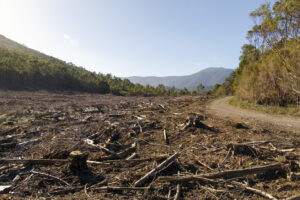Tony Abbott’s Direct Action Plan has been ridiculed by many as expensive and unworkable. One of the primary objections has been that the centrepiece of the policy, the Emissions Reduction Fund, is a baseline-and-credit scheme that will require counterfactual baselines to be set for every participating polluter. The baseline for a given polluter will be an estimate of what its emissions would have been in the absence of the incentive provided through the scheme. Payments to polluters will then be made for any emission reductions below the baseline. This type of scheme is not novel or untested.
Related documents
Between the Lines Newsletter
The biggest stories and the best analysis from the team at the Australia Institute, delivered to your inbox every fortnight.
You might also like
Our crisis of integrity looms in the Pacific
“An Albanese Labor government will restore Australia’s climate leadership, and listen and act on Pacific island warnings of the existential threat of climate change.” Despite a clear election campaign commitment to listen to Pacific Island nations and act on climate change, the Australian government continues to enable and encourage new and expanded fossil fuel projects. When it
Ensuring workers’ safety in the climate crisis
As I watched the fires in Los Angeles unfold in January this year, my mind of course reflected on the 1999-2000 Black Summer bushfires in Australia. Both these seasons have wrought significant damage to humans and other animals, and to land, infrastructure and property. There has been a huge personal, collective and financial toll involved.
Five priorities for the next parliament if we want a liveable Australia
Climate and nature crises won’t pause while politics plays out.




